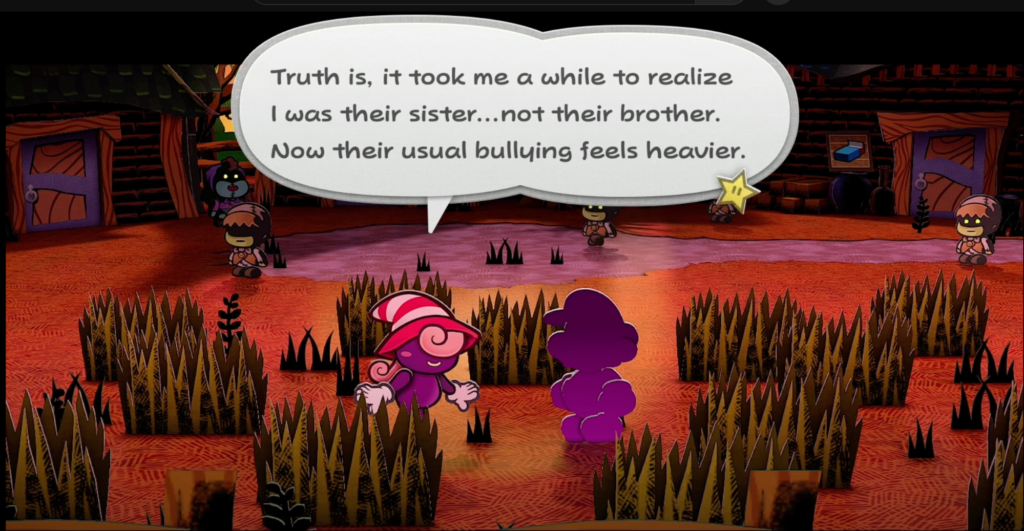I wish that these videos weren’t always videos. A lot of this information would be delivered just as effectively in text, but these days a lot of game researchers have abandoned good old text for flashy video, or otherwise locked-off Discord servers that don’t add to our common body of knowledge. I’ve complained about this before, and I am liable to keep complaining about it. Because I’m right about this, and yet it doesn’t change. Get to fixing this, world!
The video (21 minutes) has a lot of interesting changes though. Paper Mario: The Thousand-Year Door has sustained a huge amount of fan interest over the years, due to its story being actually really good for a Mario game, it’s terrific sense of humor, and its deep gameplay. It’s generally agreed to be the highlight of the whole Paper Mario series, building on the ideas of the first game.
This is a good opportunity to muse upon what the gameplay merits of TYD are. I identify these:
- The combat system, which keeps most of your moves useful in different ways by giving them special properties that make intuitive sense. Jumps can’t hit spiked enemies or enemies on the ceiling, while hammer attacks only hit the first enemy in line and can’t hit enemies in the air. There are exceptions to these rules, but they’re more costly. Follower attacks also have their own limitations along these lines.
- The action commands, and Guard and Superguard functions. Paper Mario wasn’t the first JRPG to add a timed minigame to combat (that may have been Super Mario RPG), but the design here is very good. Most moves have an action command minigame where good performance increases the move’s power. Guard reduces the damage taken from attacks by pressing a button in a brief time window, while Superguard negates damage if a different button is pressed in a briefer time window. The button you press changes both the difficulty and the reward. Both aren’t easy to perform consistently, as many enemy attacks have tricky timing, but the Superguard bonus is great enough that it’s really tempting to use it. All three of these functions largely replace the general randomness and variance in JRPG combat, making it a lot more skill-based. (Finding ways for players to demonstrate skill in RPG-style games is a long-standing design challenge. I should write something about that here in the future!)
- And then there’s the joy of exploration, and the many secrets in the game world that reward it. Paper Mario had a bunch of them, but TYD really goes overboard. I can’t name a game with as much cool stuff thrown into its game world for players to just happen upon. The old line used in many Nintendo game manuals is to “try everything,” but how much of everything should the player really try? TYD is one of the few games that feels like it lives up to the true breadth of that word. There is a character in the game whose purpose is to give the player hints at finding obscure secrets. The Trouble Center offers further rewards and fleshes out the game world by giving Mario and friends the opportunity to perform helpful tasks for people. There’s so many things to do!
Super Paper Mario also had a lot of tricks, but it had a worse story (IMO), and it completely abandoned the classic Paper Mario battle system. Later Paper Mario games went in a completely different direction with unique battle systems for each. It was Thousand Year Door that got the most right in a single game.
So, um. The video! Yes, watch it, it’s interesting.
Obscure Changes in Paper Mario: The Thousand-Year Door (Youtube, 21 minutes)


